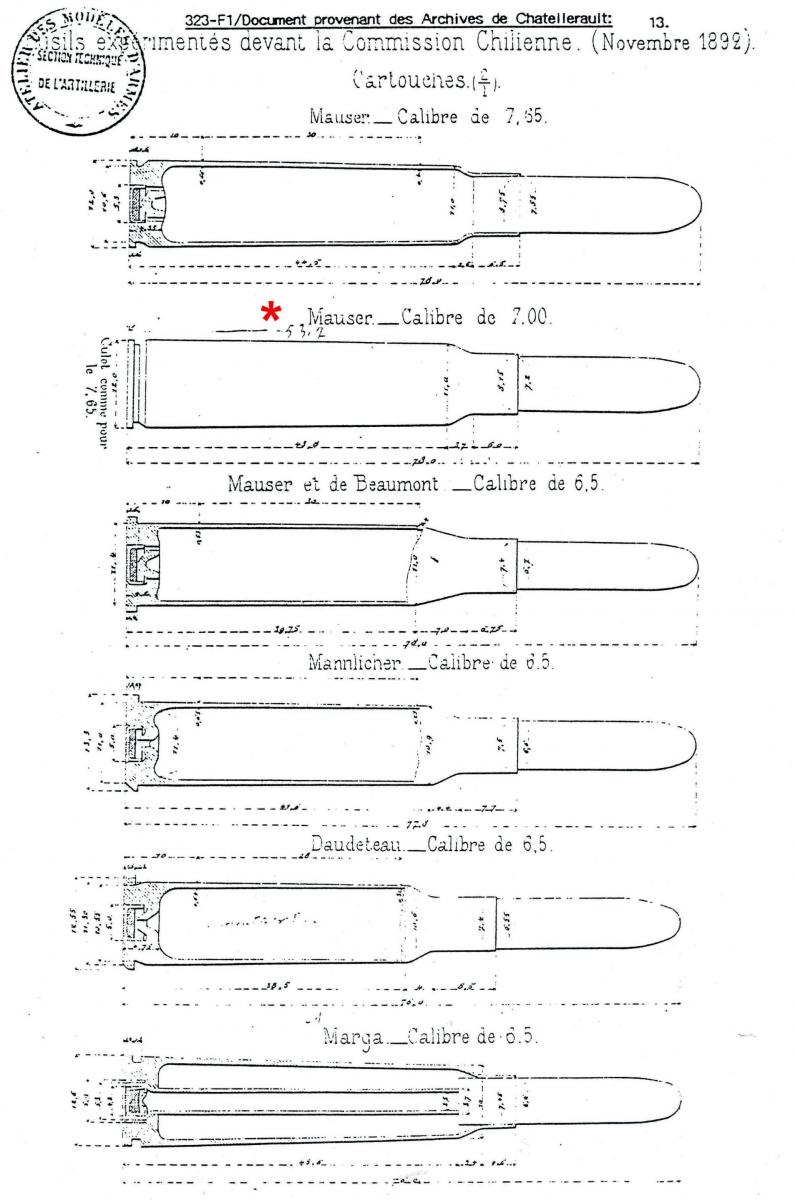



There is a school of thought that this was an experimental development by FN between 1898-1902. FN at that time was a wholly owned subsidiary of DWM (after a lengthy patent battle which FN lost in 1895-96). Supplies sent to the South Africans were made by both (or using) FN and DM cases, using already formed “FyA” Latin American contract cases, in either 7×57 or 7,65×54, suitably sized/trimmed. “FyA” Spanish “Fusiles y Ametralladores” (rifles and machine guns). The experiment died out, since the cases, when used to a great degree in original 7×57 chambers, caused erosion of the neck area to the extent that when ammo was changed back to 7×57, the erosion caused failure to extract as the case necks expanded into the eroded part of the neck. With the long round nose projectile of the time, there was no need to go to a shortened case, although a 7×54 design would have had more success later with the Spitzer projectile (in the 1920s); but confusion would have resulted in using two different neck length cases in the same body chambering, to no really useful purpose.
There is also information that although there was experimentation in the “Kortnek” case and the batch sent to South Africa was made up as an expedient, as there were already manufactured 7,65×54 cases on hand (“FyA” marked) and these were simply necked down and loaded. As to the “DM” marked cases, these may have been made up/filled by DM at Karlsruhe, or the cases sent to FN at Liege, to be converted and loaded. It was common practice for ammunition factories in the late 1800s and early 1900s to manufacture cases in bulk and then store them until orders for loaded ammo arrived. Sometimes cases made one year were loaded well into the next year.
There is also a document shown below from the Chatellerault archive (Belgium?) showing various cartridges for rifles which were proposed to the Chilean Commission in November of 1892. The top one depicts a 7.65×54 Mauser. The second, a 7mm Mauser with a case length of 53.5mm and a base construction, as clearly stated on the document, as identical to the 7.65, or taken from the 7.65. I have currently 5 cartridges in my collection (1x DM K, 2x DM FyA, 2x FN93) and the case lengths are DM K = 53.51mm, DM FyA = 53.45mm, DM FyA = 53.28mm, FN93 = 53.43mm, FN93 = 53.48 (scanned specimen above)
There have been many theories as to how the Kortnek came in to existence. Perhaps this document proves that it is a unique caliber in its own right and not simply a reworked 7.65×54 case, created to satisfy an urgent order.

